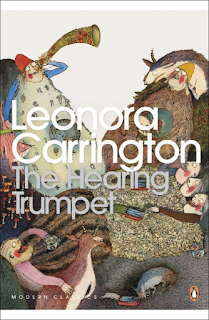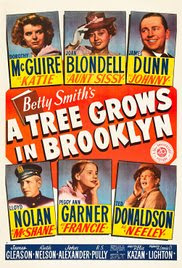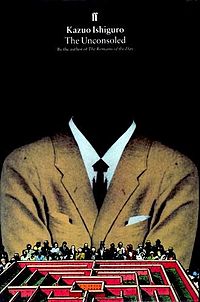20518
Followers
29
Following
Sabbie Dare and Friends
I have been writing fiction since my reception teacher, Mrs Marsden, put a paper and pencil in front of me. I can remember thinking; What? Do real people write these lovely books? I want to do that! I gained an MA in creating writing and sold my first books for children; Sweet’n’Sour, (HarperCollins) and Tough Luck, (Thornberry Publishing), both from Amazon. I also love writing short stories and they regularly appear in British anthologies.
I now write crime fiction, published by Midnight Ink. The idea for In the Moors , my first Shaman Mystery came to me one day, in the guise of Sabbbie Dare. She came to me fully formed and said; “I'm a young therapist, a shaman, and sometimes I do get very strange people walking into my therapy room. Honestly, I could write a book about some of them...”
I am a druid; a pagan path which takes me close to the earth and into the deep recesses of my mind. Shamanic techniques help me in my life - in fact they changed my life - although, unlike Sabbie, I’ve never set up a therapeutic practice...I’m too busy writing and teaching creative writing with the Open College of the Arts. I’m a fellow of the Higher Education Academy.
Although I was born, educated and raised my two children in the West Country, I now live in west Wales with my husband James.
IN THE MOORS, the first Shaman Mystery starring SABBIE DARE was released in the US in 2013 and UNRAVELLING VISIONS will be out this autumn, but you can already reserve your copy on Amazon.
Join me on my vibrant blogsite, http://www.kitchentablewriters.blogspot.com where I offer students and other writers some hard-gained advice on how to write fiction.
Seven Amazing Books Only I can Recall
Instead of reviewing books on the best seller list, or books winning prizes, I’m looking at seven books that have generally been forgotten.
But, I haven’t forgotten them – in most instances, they are still in my bookcase. The memories I have aren’t only of the stories inside the covers, but of the time and place I read the book. Here are my ‘FORGOTTEN SEVEN’, starting with the most recent, and moving back in time.
ONE - The Voyage of the Narwhal
In the spring of 2000, I took three girlfriends on holiday to the Costa Del Azahar…the coast of orange blossom. We stayed in my tiny flat, which overlooked the Spanish Mediterranean. We basked in some early sunshine, ate at seafood restaurants, shopped at the markets for cheeses, wines and soft, Spanish bread, and took long walks along the coastal paths. We talked a lot, too, because we’d all known each other for at least twenty years and it was great to catch up. And I read my airport purchase; The Voyage of the Narwhal, by Andrea Barrett. It seemed a fitting read; the tale of a journey while we too, were away from home. But the Narwhal was grinding through the ice of the North-West Passage, rather than swimming in southern seas.
 It is 1855 and Erasmus Wells, an introspective naturalist, wants to extend his scholarship on this expedition to the Arctic captained by his brother-in-law-to-be, Zechariah Voorhies. Zechariah is nothing like shy Erasmus. He’s an impetuous smart-aleck who hopes to find a legendary ‘open polar sea’ and a missing explorer who disappeared a decade before.
It is 1855 and Erasmus Wells, an introspective naturalist, wants to extend his scholarship on this expedition to the Arctic captained by his brother-in-law-to-be, Zechariah Voorhies. Zechariah is nothing like shy Erasmus. He’s an impetuous smart-aleck who hopes to find a legendary ‘open polar sea’ and a missing explorer who disappeared a decade before.So there’s the early clue – people die when they go to this place.
The voyage turns colder and sourer, as winter closes over the ship, and things go badly wrong. "I want my NAME on something," Zechariah tells Erasmus. "Something BIG -- is that so hard to understand? I want my name on the map.”. Although this is fiction, it rang horribly true, knowing as we do how explorers have lost their lives on both freezing continents. The waters are hazardous with shifting icebergs, the sled dogs die, and a sailor succumbs to lockjaw. Very soon they are hemmed in by ice on all sides, and the Narwhal spends an entire winter in the arctic with dwindling supplies of food. The crew splits into factions as Zechariah becomes in turns tyrannical and moody.
In the middle of a Spanish holiday, I was swept into this chilling adventure, and can still marvel at Barrett’s psychological insights into her characters and the depths of the philosophy with which she underpins her story.
TWO
Kasuo Ishiguro wrote The Unconsoled between The Remains of the Day andWhen We Were Orphans. Both these books went down well with the book reading world, but The Unconsoled sank like a stone. Why? I kept asking as I read and reread it. Why aren’t people getting this marvellous book?
Ishiguro is one of my favourite contemporary writers. (See my review of his latest, The Buried Giant.) His books are imaginative, inventive, strongly crafted and push the boundaries to the very edges. The Unconsoled is my favourite of all his novels.
It's a slippy book, disorientated in time and space and drenched in music. Unlike the subsequent Never Let Me Go, now a film, The Unconsoled dropped out of sight like the anchor on the Narwhal, after receiving universally bad reviews at the time of its publication. The Telegraph review said it was a sprawling, almost indecipherable 500-page work and the Guardian said it left readers and reviewers baffled. One literary critic said that the novel had invented its own category of badness. Meanwhile, I was reading it with intense absorption and enjoyment. But I'm glad to say that by 2005 literary critics were beginning to agree with me...they voted the novel as the third best British, Irish, or Commonwealth novel from 1980 to 2005, and The Sunday Times placed it in 20th century's 50 most enjoyable books, later published as Pure Pleasure; A Guide to the 20th Century's Most Enjoyable Books.
The Unconsoled is set over three days in the life of concert pianist Ryder, who has come to an unnamed European city to perform. His memory seems patchy and selective and he drifts from situation to situation as if in a surreal dream, unable to totally understand what is going on.
One scene in the book has never left me; Ryder is in his hotel room when he notices that the rug is similar to the one he played soldiers on when a child. Suddenly, he realizes that the room is actually his old bedroom; he's back in his childhood. What follows is a tender, almost cherishing memory of better times. In 1995, I’d recently been nursing my mother, who'd died of the advanced stages of a particularly psychotic form of Alzheimer's disease, and Ryder's problems and experiences reminded me of the twilight world she'd lived in, where real life probably invaded her dream world in unpleasant ways...she was happiest when imagining I was her sister, Beatrice, and that we were both in our twenties and living together before Mum married my father (Beatrice never married – in fact she came to live with the newly-weds!) Listening to Mum's mad conversations with herself gave me a wonderful insight into what life was like before the second world war (my mum was quite old when I was born).
I would recommend Ishiguro to anyone who hasn't yet read him...all his books. But The Unconsoled has a special place in my heart and will never leave my bookcase...so get your own copy!
THREE
 Talking of the surreal, I was listening to A Good Read, the longstanding programme on reading and books on BBC Radio Four, when I first heard about The Hearing Trumpet. “This is a bonkers book,” said one of the programme’s guests, who’d been asked to read it. “It’s mad. Utterly bats in the belfry.”
Talking of the surreal, I was listening to A Good Read, the longstanding programme on reading and books on BBC Radio Four, when I first heard about The Hearing Trumpet. “This is a bonkers book,” said one of the programme’s guests, who’d been asked to read it. “It’s mad. Utterly bats in the belfry.”I rushed to Amazon and ordered a second-hand copy. I had to find out if he was right.
Written in the early 1960s, but only published in 1974, The Hearing Trumpet isLeonora Carrington’s best loved book. Carrington was born in Lancashire to a strict Catholic family, and began to paint when she first came into contact with surrealism through her lover, painter Max Ernst. (See the cover illustration, left.) Her stories are as surrealist as her paintings; she writes with originality, imagination and charm. The Hearing Trumpet is a classic of fantastic literature, reminding me of a childhood favourite, Alice in Wonderland, but rather than falling down a rabbit hole, we view the world through ninety-two-year-old Marian Leatherby’s ornate hearing device. Marian’s family commit her to a sinister retirement home, with buildings shaped like igloos and birthday cakes. The occupants have to endure the twisted religious sermons of the proprietor while they eat their weird meals overlooked by a portrait of a leering Abbess. When Marian happens upon a book detailing the life of the Abbess, the pace hots-up remarkably, into a magical adventure of escape. The guest on A Good Read was perfectly right. This book is bonkers. But such fun to read!
FOUR
 I still have my battered copy of Cry, the Beloved Country by Alan Paton, possibly the most important novel to come out of South Africa before it abolished apartheid. It was published in 1948 the US; in South Africa it created much controversy. When I opened it again to write this, the smell of old books came wafting out, taking me back to the seventies, when I bought it at a second-hand stall. At that time, South Africa apartheid was still universal, with vicious race laws. Nelson Mandela was incarcerated on Robin Island and, here in the UK, I wanted to find something that would explain all of this to me. Cry, the Beloved Country, with its major theme of the overwhelming problem of racial inequality, suited my needs. It’s still an incredible read, and a reminder of how important it is not to turn back the clock.
I still have my battered copy of Cry, the Beloved Country by Alan Paton, possibly the most important novel to come out of South Africa before it abolished apartheid. It was published in 1948 the US; in South Africa it created much controversy. When I opened it again to write this, the smell of old books came wafting out, taking me back to the seventies, when I bought it at a second-hand stall. At that time, South Africa apartheid was still universal, with vicious race laws. Nelson Mandela was incarcerated on Robin Island and, here in the UK, I wanted to find something that would explain all of this to me. Cry, the Beloved Country, with its major theme of the overwhelming problem of racial inequality, suited my needs. It’s still an incredible read, and a reminder of how important it is not to turn back the clock.FIVE
 One rainy afternoon, I watched the 1945 black and white film A Tree Grows in Brooklyn, on the TV. I was a young mum at the time, and was drawn to the story of this impoverished but aspirational second-generation Irish-American living in Brooklyn, New York City, during the first two decades of the 20th century. So I did what eleven year old Francie Nolan did all the time; visit my local library to borrow the book. Written in 1943 by Betty Smith, the book was an immense success at the time. It must have hit the same nerve with that reading public as the film, and subsequently the novel, did with me. It’s the story of family life, and the immigrant experience. The Nolans are poor, often hungry, but they fill their home with warmth and love. The main metaphor of the book is the Chinese ‘Tree of Heaven’, which grows outside the window of the family’s run-down tenement building; a symbol of Francie’s desire for a good education, which she manages to obtain through some subterfuge with the US school system. This beautifully written account of the American immigrant experience might be due for a revival, for various reasons, right at this moment.
One rainy afternoon, I watched the 1945 black and white film A Tree Grows in Brooklyn, on the TV. I was a young mum at the time, and was drawn to the story of this impoverished but aspirational second-generation Irish-American living in Brooklyn, New York City, during the first two decades of the 20th century. So I did what eleven year old Francie Nolan did all the time; visit my local library to borrow the book. Written in 1943 by Betty Smith, the book was an immense success at the time. It must have hit the same nerve with that reading public as the film, and subsequently the novel, did with me. It’s the story of family life, and the immigrant experience. The Nolans are poor, often hungry, but they fill their home with warmth and love. The main metaphor of the book is the Chinese ‘Tree of Heaven’, which grows outside the window of the family’s run-down tenement building; a symbol of Francie’s desire for a good education, which she manages to obtain through some subterfuge with the US school system. This beautifully written account of the American immigrant experience might be due for a revival, for various reasons, right at this moment. SIX
Vita Sackville-West was a successful and prolific novelist and poet, but I actually know her best as the person who created the wonderful garden at Sissinghurst and as the inspiration for Orlando by Virginia Wolfe, written while they had a decade-long affair.
My copy of All Passion Spent arrived through the post in the form of a Virago Classic Triple bill. I had no idea where it came from, but I was truly grateful and delved into the three novels by three women, loving this one the most. I hung onto the book for years, but recently took it to discuss at my book club and gave it away so that others could enjoy it.
All Passion Spent came out in 1933 and focuses on some of Sackville-West’s primary concerns. She, like Wolfe, was passionate about people’s place in society, society’s constrictions on people, and women’s control of their lives. The story follows the elderly Lady Slane’s thoughts on her life’s influences and controls, happiness and relationships, while she relaxes in the summer sun. She believes, as her life is approaching its end, that she should downsize, and by the time we reach the final third of this short novel, summer is over and Lady Slane has settled into a tiny cottage She’s hoping to be almost forgotten, allowed to get on with being old, but she finds she’s still too linked to her past. She bumps into Mr FitzGeorge who has arrived from India and has secretly been in love with her since their youth. After his death, he bequeaths his outstanding art collection to Lady Slane and she passes it all to the state, much to her rather unlikable children’s disgust. This empowers her great-granddaughter Deborah, who finds the courage to break-off her engagement and pursue her love of music. Lady Slane observes this with pleasure, for Deborah will be taking the path that Lady Slane herself longed to, but could not. The novel is not a great classic, but it is interesting and entertaining, and worth a read.
SEVEN
I don’t know if Vita Sackville-West ever read The Ragged Trousered Philanthropist, but I’m betting she might have. It is the first novel to be written by a working class person, so especially loved by the socialist left in the UK, but mostly forgotten by everyone else. Robert Tressell, whose real name was Robert Noonan, was a housepainter in the early years of the last century, and a member of the Socialist Democratic Association, an early version of the Labour Party. When Noonan died in 1911, he left his 250,000 word novel in the hands of his daughter. who sold it for £25. In 1914, the book came out as a 150,000 word first edition, and in 1918, after the 1st WW was over, it was slashed again, to 100,000 words (the length of the books in the Shaman Mystery Series!) and sold at one shilling. But an uncut version is available, if you’d like to take a look.
 |
| Image from the 2010 London dramatization |
It’s not everyone’s cup of tea, as it’s an explicitly political work, but I loved it. The characters Tressell draws feel authentic and compassionate. I especially remember Owen’s little son, who swears by the efficacy of breakfast porridge, thus prophesying our own interest in the health-given benefits of oats today.
 Perhaps you have read some of these long-forgotten books yourselves and loved them as much as I did, or maybe you hated them with equal passion.
Perhaps you have read some of these long-forgotten books yourselves and loved them as much as I did, or maybe you hated them with equal passion.
If so, do tell Kitchen Table Writers by leaving a comment below.







 1
1
 1
1